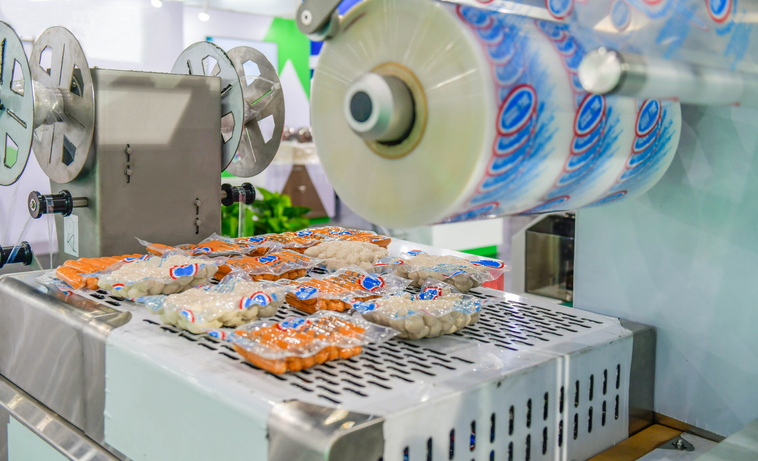How to Choose Food-Safe Packaging for Your Brand
If you’re looking for food-safe packaging for your brand, you might be overwhelmed by all the choices available to you. And, as a busy business professional, you don’t have time to sift through all the options to determine what’s right for your organization. That’s why we’ve made this comprehensive guide, taking you through all the options in one simple article. Here, you’ll learn the most common food-safe packaging options and their characteristics. Now, you can be confident that you’re choosing the right packaging solution for your needs.
Types of Food-Safe Packaging
The most common types of food-safe packaging solutions include flexible packaging, paper and cardboard, metals, and glass. Each has its own unique characteristics, which are best for some applications over others. Let’s dive in.
Flexible Packaging
In recent years, flexible packaging has gained popularity because of its protective properties, convenience, and sustainability factor. You commonly see flexible packaging for items like squeezable yogurt tubes, candy and snack bags, and more. Made from materials like PET, HDPE, and PP, flexible packaging offers superior barrier properties that help protect food from moisture, oxygen, and light. Additionally, flexible packaging is a lightweight option, which reduces transportation costs and environmental impact during the shipping process.
It’s important to note that when choosing flexible packaging, you must opt for materials that are free from harmful chemicals like BPA and phthalates. Avoiding these chemicals helps ensure consumer safety.
These are some of the most popular flexible packaging materials used for food items:
- PET: Polyethylene Terephthalate is a type of polyester that’s commonly used to make plastic bottles, trays, and films. Despite its name, PET contains no phthalates. Rather, it’s called “Terephthalate” because it’s derived from terephthalic acid. Because of its strength, clarity, and barrier properties, it’s great for packaging a wide range of products, from beverages and snacks to personal care items. It’s also a highly recyclable material, making it a common choice for businesses that want to keep sustainability in mind.
- HDPE: High-density polyethylene is a type of thermoplastic polymer known for its high strength-to-density ratio. It’s an opaque material with a milky appearance, meaning it provides more protection against light and UV radiation. Therefore, it helps better preserve food quality and is commonly used in milk jugs and food containers. Like PET, HDPE is recyclable and widely accepted for recycling programs.
- PP: Polypropylene is a versatile thermoplastic polymer widely used in flexible packaging due to its heat resistance and high tensile strength. PP offers great barrier properties against moisture, grease, and odors, which is why you’ll find this material in films, pouches, and food containers. It’s also microwave-safe and can withstand high temperatures, making it ideal for packaging microwaveable meals and snacks. PP is also recyclable, adding to its appeal as a sustainable packaging material.
Paper and Cardboard
Paper and cardboard are common solutions for food packaging. They’re usually used for packaging things like cereal, granola, pasta, crackers, and more. However, paper and cardboard packaging solutions aren’t necessarily better than flexible packaging options.
Paper and cardboard don’t offer the same preservation characteristics that flexible packaging does. Flexible packaging is much better suited to protect items against moisture and oxygen, meaning it can extend shelf life longer than paper and cardboard packaging. What’s more, flexible packaging can conform closely to product shapes, which minimizes wasted space and maximizes storage efficiency. Additionally, flexible packaging can be equipped with features such as resealable closures and easy-open tear notches, which can promote brand loyalty.
Metals
Aluminum and stainless steel are common options for metal packaging, though they’re usually reserved for canned goods. Like flexible packaging, metals provide a great barrier against moisture, oxygen, and light. However, metals are more expensive to manufacture than flexible packaging. Additionally, it’s heavier than flexible packaging, which increases transportation and logistics costs. Because of the added costs, many businesses opt for flexible packaging instead.
Glass
Glass is a great food-safe packaging material because it doesn’t chemically interact with its contents, preserving the flavor and quality of the food. It offers fantastic barrier characteristics and is an eco-friendly option. However, it’s prone to breakage, more expensive to manufacture, and is a lot heavier than flexible packaging options. For this reason, many businesses turn to flexible packaging instead.
What Food-Safe Packaging Solution is Best for Your Business?
If you’re unsure of which food-safe packaging option is right for you, you’re not alone. Many business executives don’t have the time to sift through all the options and find the optimal solution. That’s why it’s important to work with an experienced packaging manufacturer like PPC Flex. With decades of experience, we can help you decide what’s best for your business.
As an advanced flexible packaging manufacturer, we’re focused on providing powerful, purposeful packaging solutions. When you work with us, we get to know your business, developing a deep understanding of your needs to deliver the best packaging solutions. We help you grow by finding the right flexible packaging solutions that preserve products, create incredible shelf presence, and deliver a better product experience.
Let’s Get Started
Want to learn more about what we can do for you? Reach out to our team for a no-strings-attached consultation.
